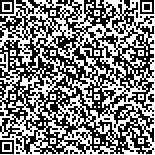| 本文已被:浏览 1695次 下载 1412次 |

码上扫一扫! |
|
|
| 大学生“上火”症状特点的关联规则分析 |
|
翟静波1, 王晓辉1, 曹红波1, 王辉1, 刘春香1, 刘智1, 商洪才1,2
|
|
1.天津中医药大学, 天津 300193;2.北京中医药大学东直门医院中医内科学教育部重点实验室, 北京 100700
|
|
| 摘要: |
| [目的] 分析“上火”的症状特点,为探讨“上火”发生机制以及制定防治措施提供依据。[方法] 以大学生为研究对象,收集“上火”的相关症状。通过关联规则挖掘“上火”症状特点。[结果] 核心的单一“上火”症状为口干渴(11.7%)、眼干涩(10.1%)、咽干(8.7%)、口腔溃疡(8.5%)、面部丘疱疹(8.3%)。核心的两症状组合为“咽干+口干渴”,占26.9%。核心的三症状组合为“眼干涩+咽干+口干渴”,占14.6%。[结论] 大学生发生“上火”时,往往伴随着多个症状的同时发生,且存在核心症状群。 |
| 关键词: 大学生 上火 症状 关联规则 |
| DOI:10.11656/j.issn.1672-1519.2016.08.04 |
| 分类号: |
| 基金项目:国家重点基础研究发展计划(973计划)项目(2014CB543000);天津市高等学校创新团队培养计划资助项目(TD12-5032)。 |
|
| Association rules analysis of “Shanghuo” symptoms among university students |
|
ZHAI Jing-bo1, WANG Xiao-hui1, CAO Hong-bo1, WANG Hui1, LIU Chun-xiang1, LIU Zhi1, SHANG Hong-cai1,2
|
|
1.Tianjin University of Traditional Chinese Medicine, Tianjin 300193, China;2.Key Laboratory of Chinese Internal Medicine of Ministry of Education, Dongzhimen Hospital, Beijing University of Chinese Medicine, Beijing 100700, China
|
| Abstract: |
| [Objective] To analyze characteristic of "Shanghuo" symptoms and provide a basis for researching "Shanghuo" mechanism and prevention. [Methods] University students were considered as objects. Related symptoms were collected and analyzed by association rules. [Results] The core of single "Shanghuo" symptoms were thirst(11.7%), dry eyes(10.1%), dry throat(8.7%), oral ulcer(8.5%) and papul ovesicle(8.3%). The core of double "Shanghuo" symptoms were "dry throat and thirst"(26.9%). The core of triple "Shanghuo" symptoms were "dry eyes, dry throat and thirst"(14.6%). [Conclusion] When university students suffered from "Shanghuo", may "Shanghuo" symptoms occurred simultaneously. Core symptom clusters were discovered in this study. |
| Key words: university student Shanghuo symptom association rule |
